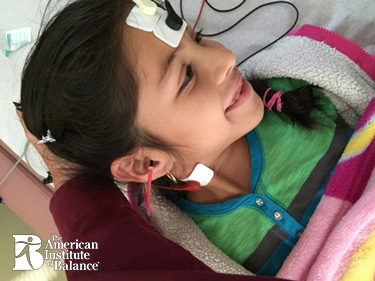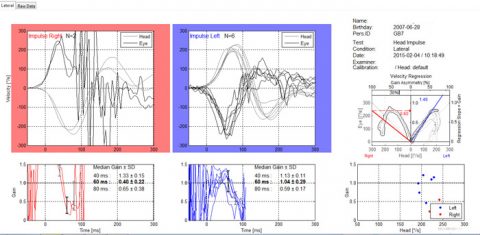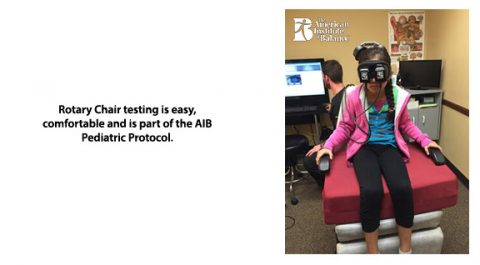
VIDEO: Video Head Impulse Test (vHIT) with Children
Published on: February 5, 2015
The vHIT is easily and reliably performed with children.
Vestibular evaluation of children can often be somewhat complicated if the practitioner does not have access to a rotary chair or VEMP. The use of the recently developed vHIT offers a simple, highly reliable, non-invasive and high sensitivity protocol to quickly evaluate children. The use of VNG, particularly calorics, offers a poor option compared to the vHIT. Calorics are not always well tolerated by young children, are of limited sensitivity
(.003 Hz), do not provide status of non-compensation and have been reported in the literature to induce migraine in some patients.
Case Study: 7-year-old female with almost daily episodes of headache, dizziness, and nausea with occasional emesis when headaches are severe. Referral is made to AIB by pediatric otolaryngologist. There is a maternal history of migraine and the child suffers from motion intolerance (car sickness). There is an otherwise negative otologic history as well as an unremarkable pre, peri and post-natal history.
The AIB pediatric protocol for this age child includes: Gans Sensory Organization Performance Test, Rotary Chair, VEMP, VOG with positions and vHIT. As can be seen in the video presentation and the data, all tests were well within normal parameters. The vHIT along with a postural/balance assessment such as the Gans SOP or CTSIB would have provided a significant amount of data had the other tests not been available to suggest there was no acute or active labyrinthine involvement. It is preferable, however, whenever possible to perform cVEMP, particularly with migraine patients. The likely conclusion is a pattern of age-onset vestibular migraine. The child will be referred to pediatric neurologists for consultation and management.
The vHIT is easily and reliably performed with children.
References:
1. Gans RE, Evaluation and Management of Vestibular Function in Infants and Children with Hearing Loss, (2014), In Madell and Flexer, Pediatric Audiology- Diagnosis, Technology, and Management, Thieme, NY.
2. Colagiorgio, P., et.al., A new tool for investigating the functional testing of the VOR, Frontiers in Neurology (2013), vol. 4, Article
3. Murdin, L. , Davies, R. A., Bronstein, A. M., Vertigo as a migraine trigger, (2009) Neurology, 73 p.638-642


